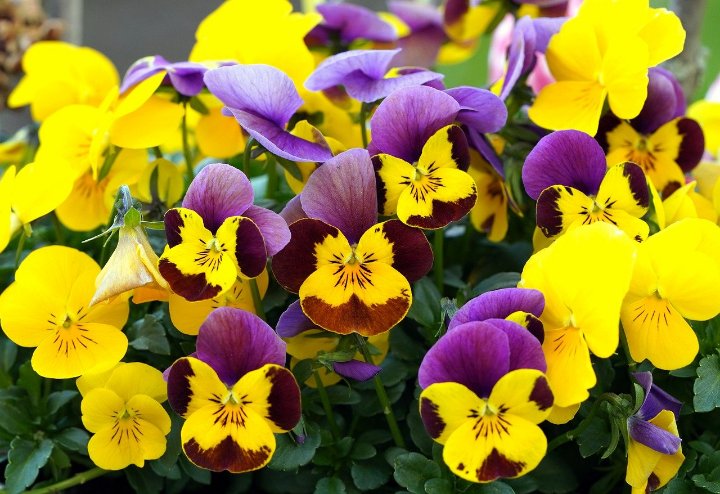Violas, often called “Johnny Jump-Ups,” are charming and versatile flowers that can add a pop of color and cheer to any garden or landscape. Whether you’re a seasoned gardener or just starting out, growing and caring for violas is relatively straightforward. In this guide, we’ll delve into everything you need to know to cultivate healthy and vibrant viola plants in your garden.
Best Viola Varieties
| Image | Name | Rating | Shop |
|---|---|---|---|
 | Viola Pansy Mars Helen Seeds |  | |
 | Viola Pansy Velvet Mix |  | |
 | Bambini Viola Seeds |  |
Viola Hardiness Zones
Violas thrive in USDA hardiness zones 3 to 8, making them suitable for a wide range of climates. Whether you live in a cooler northern region or a milder southern area, you can enjoy the beauty of violas in your garden.
How Much Sun Do Violas Need
One of the great things about violas is their adaptability to various light conditions. They can thrive in both full sun and partial shade, making them versatile additions to any garden. However, in hotter climates, they may benefit from some afternoon shade to protect them from scorching sun.
Viola Soil Requirements
Violas prefer moist, well-drained soil that is rich in organic matter. Amending your soil with compost or well-rotted manure before planting can help provide the ideal growing environment for violas.
Viola Soil pH
These charming flowers thrive in slightly acidic soil conditions. Aim for a soil pH of around 6.0 to 6.5 for optimal growth and blooming.
Viola Plant Spacing
When planting violas, space them approximately 4 to 10 inches apart, depending on the variety. This spacing allows the plants to spread and fill in the garden bed while providing adequate airflow to prevent diseases.
Viola Water Requirements
Violas have delicate roots and prefer consistently moist soil. Water them regularly, especially during dry periods, to keep the soil evenly moist. However, be careful not to overwater, as soggy soil can lead to root rot and other issues.
Viola Temperature Requirements
Violas thrive in cooler temperatures, particularly in the early spring and fall. They may struggle in extreme heat, so providing some shade during the hottest part of the day can help them stay healthy and vibrant.
Viola Humidity Requirements
While violas prefer cool, dry conditions, they can tolerate moderate humidity. Proper air circulation around the plants can help prevent issues such as powdery mildew, which thrives in humid environments.
Viola Fertilizer Requirements
For optimal growth and blooming, fertilize violas with a slow-release flower fertilizer according to the package instructions. Avoid over-fertilizing, as this can lead to excessive foliage growth at the expense of flowers.
Viola Pests
Violas are relatively resistant to pests, but they may occasionally attract aphids. Keep an eye out for these tiny insects and treat them promptly with insecticidal soap or neem oil if necessary.
Viola Diseases
Common diseases that may affect violas include gray mold, especially in humid conditions. To prevent fungal issues, avoid overhead watering and provide good air circulation around the plants.
By following these simple guidelines for growing and caring for violas, you can enjoy a beautiful display of colorful flowers in your garden throughout the growing season. With their charming blooms and easy-care nature, violas are sure to become a favorite among gardeners of all skill levels.
















